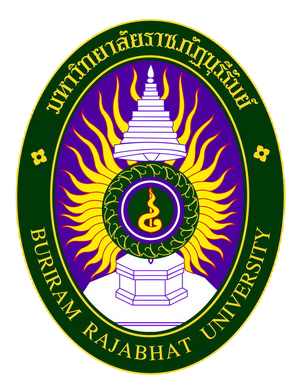การเสริมความสามารถของเทคนิคการตรวจสอบบัญชีโดยใช้คอมพิวเตอร์ช่วย (CAATs) ผ่านการใช้งานโครงข่ายประสาทเทียม (ANNs)
คำสำคัญ:
เทคนิคการตรวจสอบบัญชีโดยใช้คอมพิวเตอร์ช่วย, โครงข่ายประสาทเทียม, อินเทอร์เน็ตของสรรพสิ่งบทคัดย่อ
การศึกษานี้สำรวจการผสานรวมระหว่างโครงข่ายประสาทเทียม (ANNs) กับเทคนิคการตรวจสอบบัญชีโดยใช้คอมพิวเตอร์ช่วย (CAATs) เพื่อเพิ่มประสิทธิภาพ ความแม่นยำ และความลึกของกระบวนการตรวจสอบ แม้ว่า CAATs จะได้รับการพิสูจน์แล้วว่ามีประสิทธิภาพในการจัดการกับชุดข้อมูลขนาดใหญ่ แต่ประสิทธิภาพจะลดลงเมื่อเทียบกับความซับซ้อนและปริมาณของธุรกรรมทางการเงินที่เพิ่มขึ้น ANNs นำเสนอการแก้ปัญหาโดยใช้ความสามารถในการเรียนรู้จากข้อมูลและระบุรูปแบบที่ซับซ้อน ซึ่งช่วยปรับปรุงความสามารถในการตรวจจับการทุจริตและการวิเคราะห์ข้อมูลภายในกระบวนการตรวจสอบบัญชีอย่างมีนัยสำคัญ
จากการศึกษาพบว่า ANNs สามารถรวมกับเครื่องมือตรวจสอบแบบดั้งเดิมเพื่อแก้ไขข้อจำกัดในปัจจุบันได้ โดยทำการทดสอบและการจำลองข้ามชุดข้อมูลที่หลากหลาย ผลการศึกษาชี้ให้เห็นว่า ANNs ไม่เพียงแต่เพิ่มความสามารถของ CAATs ในการตรวจจับความไม่สอดคล้องและกิจกรรมทุจริตเท่านั้น แต่ยังช่วยให้สามารถประมวลผลข้อมูลแบบทันทีได้ ซึ่งเป็นสิ่งสำคัญสำหรับการตัดสินใจในการตรวจสอบ นอกจากนี้ การศึกษาอภิปรายถึงความท้าทายและข้อจำกัดที่เกี่ยวข้องกับการใช้งาน ANNs ในการตรวจสอบบัญชี รวมถึงความต้องการทรัพยากรคอมพิวเตอร์จำนวนมากและความเสี่ยงที่เกิดจากความไม่โปร่งใสของกระบวนการตัดสินใจของ ANNs ข้อเสนอแนะในการลดความเสี่ยงเหล่านี้ ได้แก่ การเพิ่มความโปร่งใสและการพัฒนากลไกการเรียนรู้และปรับตัวอย่างต่อเนื่องภายใน ANNs เพื่อติดตามพัฒนาการทางการเงินที่เปลี่ยนแปลงไป การผสานรวมของ ANNs กับ CAATs แสดงถึงความก้าวหน้าที่สำคัญในวิชาชีพการตรวจสอบ แนะนำการเปลี่ยนแปลงสู่แนวทางตรวจสอบบัญชีที่ใช้เทคโนโลยีสูงขึ้น เช่น IoT ที่รองรับความซับซ้อนของระบบการเงินสมัยใหม่ได้ดี สุดท้ายนำไปสู่การรายงานทางการเงินที่เชื่อถือได้และโปร่งใสยิ่งขึ้น
References
ประทีป วจีทองรัตนา. (2560). ประสิทธิภาพการสอบบัญชีของผู้สอบบัญชีรับอนุญาตในประเทศไทย. วารสารสมาคมนักวิจัย, 22(2), 252-269.
ไพโรจน์ เกตุภักดีกูล. (2567). การคาดคะเนการทุจริตจากงบการเงินโดยใช้แบบจำลองโครงข่ายประสาทเทียมสำหรับการตรวจสอบบัญชี [ดุษฎีนิพนธ์ปริญญาบริหารธุรกิจดุษฎีบัณฑิต ไม่ได้ตีพิมพ์]. กรุงเทพฯ: มหาวิทยาลัยเทคโนโลยีราชมงคลพระนคร
พรรณนิภา รอดวรรณะ. (2564). ระบบ Forensic Analytics ขั้นพื้นฐานในการตรวจสอบการทุจริตของงบการเงิน: กรณีศึกษาบริษัทในตลาดหลักทรัพย์แห่งประเทศไทย. วารสารสภาวิชาชีพบัญชี, 3(8), 4-21.
สภาวิชาชีพบัญชี ในพระบรมราชูปถัมภ์. (2555ก). ความรับผิดชอบของผู้สอบบัญชีเกี่ยวกับการพิจารณาการทุจริตในการตรวจสอบงบการเงิน (มาตรฐานการสอบบัญชี รหัส 240). สืบค้นเมื่อ 1 มิถุนายน 2564 จาก https://acpro-std.tfac.or.th/test_std/uploads/files/TSA/2564_TSA240.pdf
สภาวิชาชีพบัญชี ในพระบรมราชูปถัมภ์. (2555ข). วัตถุประสงค์โดยรวมของผู้สอบบัญชีรับอนุญาตและการปฏิบัติงานตรวจสอบตามมาตรฐานการสอบบัญชี (มาตรฐานการสอบบัญชี รหัส 200). สืบค้นเมื่อ 1 มิถุนายน 2564 จาก http://acpro-std.tfac.or.th/test_std/uploads/files/TSA/2566_TSA200.pdf
สภาวิชาชีพบัญชี ในพระบรมราชูปถัมภ์. (2563). กรอบแนวคิดสำหรับการรายงานทางการเงิน (ประกาศสภาวิชาชีพบัญชี ที่ 48/2563). สืบค้นเมื่อ 26 มกราคม 2564 จาก https://eservice.tfac.or.th/get_file/index.php?file=Frame%20work_03.10.66.pdf
Agatonovic-Kustrin, S., & Beresford, R. (2000). Basic Concepts of Artificial Neural Network (ANN) Modeling and Its Application in Pharmaceutical Research. Journal of Pharmaceutical and Biomedical Analysis, 22(5), 717-727. https://doi.org/10.1016/S0731-7085(99)00272-1
Ahamed, K. I., & Akthar, S. (2016). A Study on Neural Network Architectures. Computer Engineering and Intelligent System, 7(9), 1-7.
Al-Hiyari, A., Al Said, N., & Hattab, E. (2019). Factors that Influence the use of Computer Assisted Audit Techniques (CAATs) by Internal Auditors in Jordan. Academy of Accounting and Financial Studies Journal, 23(3), 1-15.
DeGrave, A. J. (2024). Auditing the Reasoning Processes of Medical-Image AI. (Doctor of Philosophy). Washington: University of Washington.
Fedyk, A., Hodson, J., Khimich, N., and Fedyk, T. (2022). Is Artificial Intelligence Improving the Audit Process? Review of Accounting Studies, 27(3), 938-985. http://doi.org/10.1007/s11142-022-09697-x
Hasan, A. R. (2021). Artificial Intelligence (AI) in Accounting & Auditing: A Literature Review. Open Journal of Business and Management, 10(1), 440-465. http://doi.org/10.4236/ojbm.2022.101026
Hilal, W., Gadsden, S. A., & Yawney, J. (2022). Financial Fraud: A Review of Anomaly Detection Techniques and Recent Advances. Expert systems with applications, 193, 116429.
Huang, S.-M., Huang, Y.-T., & Wang, L.-K. (2020). Teaching Case–Predicting the Probability of Company Bankruptcy with CAATs. International Journal of Computer Auditing, 2(1), 5-22. http://doi.org/10.53106/256299802020120201002
ISACA. (2019). Why Auditors Rarely Find Fraud 24. Retrieved 15 August 2023 from https://www.isaca.org/resources/news-and-trends/newsletters/atisaca/2019/volume-24/why-auditors-rarely-find-fraud
Janvrin, D., Lowe, D. J., & Bierstaker, J. (2008). Auditor Acceptance of Computer-Assisted Audit Techniques. Iowa State University, Arizona State University and Villanova University.
Kootanaee, A. J., Aghajan, A. A. P., & Shirvani, M. H. (2021). A Hybrid Model Based on Machine Learning and Genetic Algorithm for Detecting Fraud in Financial Statements. Journal of Optimization in Industrial Engineering (JOIE), 14(2), 183-201. http://doi.org/10.22094/JOIE.2020.1877455.1685
Mijwil, M. M., Aggarwal, K., Doshi, R., Hiran, K. K., & Sundaravadivazhagan, B. (2022). Deep Learning Techniques for COVID-19 Detection Based on Chest X-ray and CT-scan Images: A Short Review and Future Perspective. Asian Journal of Applied Sciences, 10(3), 224-231.
Nawaiseh, A. K., Abbod, M. F., & Itagaki, T. (2020). Financial Statement Audit Using Support Vector Machines, Artificial Neural Networks and K-Nearest Neighbor: An Empirical Study of UK and Ireland. International Journal of Simulation-Systems, Science and Technology, 21(2), 1-6. http://doi.org/10.5013/IJSSST.a.21.02.07
Omar, N., Johari, Z. A., & Smith, M. J. J. o. F. C. (2017). Predicting Fraudulent Financial Reporting Using Artificial Neural Network. Journal of Financial Crime, 24(2), 362-387. http://doi.org/10.1108/JFC-11-2015-0061
Omitogun, A., & Al-Adeem, K. (2019). Auditors' Perceptions of and Competencies in Big Data and Data Analytics: An Empirical Investigation. International Journal of Computer Auditing, 1(1), 92-113. http://doi.org/10.53106/256299802019120101005
Omoteso, K. (2012). The Application of Artificial Intelligence in Auditing: Looking Back to the Future. Expert systems with applications, 39, 8490-8495. http://doi.org/10.1016/j.eswa.2012.01.098
Sánchez-Serrano, J. R., Alaminos, D., García-Lagos, F., & Callejón-Gil, A. M. (2020). Predicting audit opinion in consolidated financial statements with artificial neural networks. Mathematics, 8(8), 1288. http://doi.org/10.3390/math8081288
Topor, D. I. (2017). The Auditor's Responsibility for Finding Errors and Fraud from Financial Situations: Case Study. International Journal of Academic Research in Accounting, Finance and Management Sciences, 7(1), 342-352. http://doi.org/10.6007/IJARAFMS/v7-i1/2862
Turing, A. (2003). Machinery and Intelligence. Mind: A Quarterly Review of Psychology and Philosophy, 59(236), 433-460.
Wang, J., & Yang, J. G. S. (2006). Data Mining Techniques for Auditing Attest Function and Fraud Detection. Journal of Forensic Investigative Accounting, 1(1), 4-10.
Wu, R. C. (1997). Neural Network Models: Foundations and Applications to an Audit Decision Problem. Annals of Operations Research, 75, 291-301. http://doi.org/10.1023/A:1018915714606
Zhang, Z., & Wang, Z. (2021). Design of Financial Big Data Audit Model Based on Artificial Neural Network. International Journal of System Assurance Engineering and Management. http://doi.org/10.1007/s13198-021-01258-w
Downloads
เผยแพร่แล้ว
ฉบับ
บท
License
Copyright (c) 2024 วารสารสหวิทยาการจัดการ มหาวิทยาลัยราชภัฏบุรีรัมย์

This work is licensed under a Creative Commons Attribution-NonCommercial-NoDerivatives 4.0 International License.
ลิขสิทธิ์ ในการตีพิมพ์บทความ
จะโชว์ตอนที่ ผู้ส่งบทความ ตีพิมพ์ ต้องกด accept






